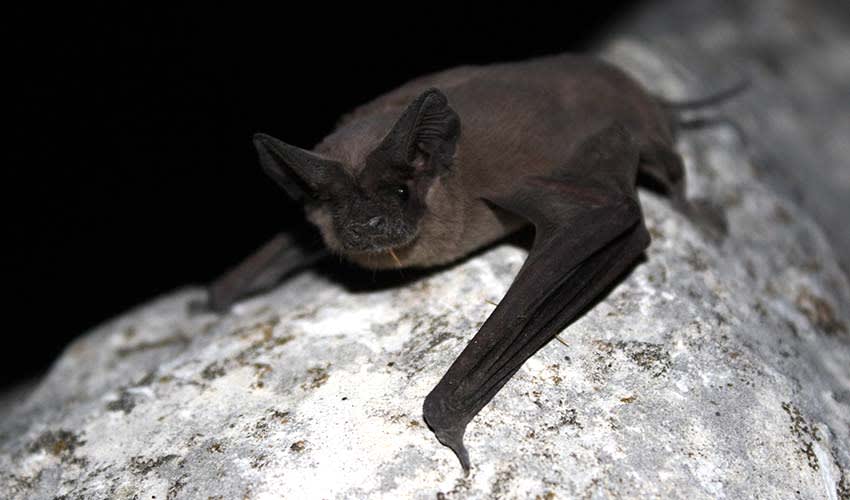Native to the Americas, this species ranges from the southern United States through Mexico and into Central and South America, adapting to a wide variety of environments. Its common name comes from its “free tail”, which extends well beyond the tail membrane—a trademark of its genus—and gives it a sleek, aerodynamic profile in flight.
Physically, the Mexican free-tailed bat is medium-sized, and its fur is usually brown or gray. Its wings are long and narrow, built for endurance flying. What truly sets it apart is its flight ability: this bat can reach speeds of over 160 km/h (100 mph), making it one of the fastest animals on Earth, faster even than cheetahs and rivaling the speeds of swifts. Unlike many bats that flutter in short bursts, the Mexican free-tailed bat cruises high in the sky, hunting insects over vast distances.
One of the most extraordinary aspects of this species is its colony size. Some roosts, particularly in Texas and Mexico, house millions of individuals, making them among the largest mammalian colonies on the planet. Famous sites like Bracken Cave in Texas host up to 20 million bats in a single cavern. At dusk, these colonies emerge in massive swirling clouds that darken the sky, creating a breathtaking natural spectacle as they head out to feed. Each bat consumes thousands of insects a night, providing massive ecological services by controlling agricultural pests.
Behaviorally, Mexican free-tailed bats are highly social. They cluster tightly in caves, under bridges, or in buildings, where the warmth of so many bodies helps pups grow quickly. Their breeding colonies are especially impressive: females gather in maternity roosts, each giving birth to a single pup. With millions of babies packed together, mothers recognize their own young by their unique vocalizations and scents, an impressive feat of individual recognition in such crowded conditions.
Distribution
 Anguilla
Anguilla Antigua & Barbuda
Antigua & Barbuda Argentina
Argentina Aruba
Aruba Barbados
Barbados Bolivia
Bolivia Bonaire Sint Eustatius And Saba
Bonaire Sint Eustatius And Saba Brazil
Brazil British Virgin Is.
British Virgin Is. Cayman Islands
Cayman Islands Chile
Chile Colombia
Colombia Costa Rica
Costa Rica Cuba
Cuba Dominica
Dominica Dominican Republic
Dominican Republic Ecuador
Ecuador El Salvador
El Salvador Falkland Islands
Falkland Islands French Guiana
French Guiana Grenada
Grenada Guadeloupe
Guadeloupe Guatemala
Guatemala Guyana
Guyana Haiti
Haiti Honduras
Honduras Jamaica
Jamaica Martinique
Martinique Mexico
Mexico Montserrat
Montserrat Panama
Panama Peru
Peru Puerto Rico
Puerto Rico Saint Barthélemy
Saint Barthélemy Saint Lucia
Saint Lucia Saint Martin
Saint Martin Saint Vincent
Saint Vincent Sint Maarten
Sint Maarten St. Kitts & Nevis
St. Kitts & Nevis Suriname
Suriname Trinidad & Tobago
Trinidad & Tobago US Virgin Islands
US Virgin Islands United States
United States Venezuela
VenezuelaAnything we've missed?
Help us improve this page by suggesting edits. Glory never dies!
Suggest an editGet to know me
Terrestrial / Aquatic
Altricial / Precocial
Polygamous / Monogamous
Dimorphic (size) / Monomorphic
Active: Diurnal / Nocturnal
Social behavior: Solitary / Pack / Colony
Diet: Carnivore / Herbivore / Omnivore / Piscivorous / Insectivore
Migratory: Yes / No
Domesticated: Yes / No
Dangerous: Yes / No




